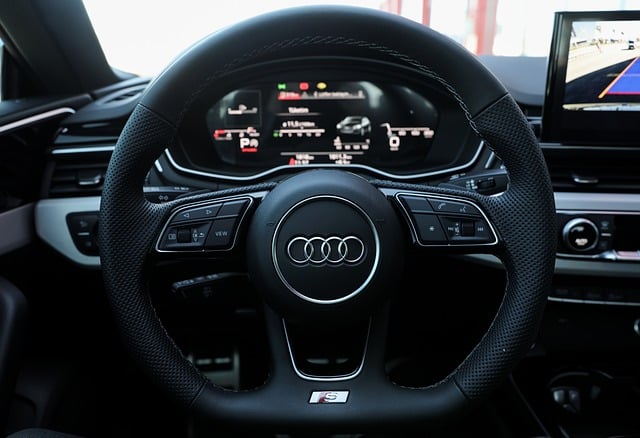Fast car battery charging systems provide a swift and efficient solution for rejuvenating your vehicle's battery, offering significant advantages such as rapid turnaround times and enhanced convenience. These advanced chargers not only save time but also incorporate safety features to prevent overcharging and protect the battery from potential damage due to excessive heat or improper charging protocols. It's important to use these systems responsibly according to manufacturer guidelines to ensure your car battery maintains optimal performance and longevity, despite the potential risks associated with rapid charging. By investing in a reliable fast-charging system and adhering to best practices, you can enjoy the benefits of quick and effective battery rejuvenation while safeguarding your vehicle's electrical system against harm.
Exploring the advancements in automotive technology, this article delves into the realm of fast car battery charging systems, a critical component for modern vehicles. We’ll unravel the mechanics behind these systems, compare their efficiency to traditional methods, and assess the risks and benefits they present. From the convenience of rapid recharging to the impact on battery health and longevity, understand how these innovations are reshaping transportation. Join us as we examine the current state and future potential of car battery charging technology, ensuring your drive is always powered for performance and safety.
- Understanding Car Battery Charging: The Basics
- Types of Car Battery Chargers and Their Functions
- The Role of Fast Charging in Modern Vehicles
- Benefits of Fast Car Battery Charging Systems
- – Efficiency and Time-Saving Aspects
- – Enhanced Battery Longevity
- 5. Drawbacks of Rapid Car Battery Charging
- – Risk of Overcharging and Damage
Understanding Car Battery Charging: The Basics

When a car’s engine is off, the vehicle’s electrical components are powered by the car battery. This lead-acid or alternative technology battery stores energy that can be used to start the car and operate its electrical systems. Understanding the process of charging a car battery is crucial for maintaining its health and ensuring reliable vehicle operation. Car battery charging involves replenishing the stored energy within the battery after it has been depleted during use. This process can be accomplished through either an alternator when the engine is running or a dedicated battery charger when the car is stationary.
The charging process begins as current flows from the alternator to the battery, re-establishing its charge. The alternator, driven by the engine’s rotation, generates electrical energy and regulates voltage to match the battery’s optimal charging level. This careful management prevents overcharging, which can damage the battery and shorten its lifespan. A car battery that is consistently and correctly charged will hold a charge longer, start the engine more efficiently, and maintain all electrical functions without failing. Conversely, a neglected or improperly charged battery may suffer from ‘sulfation’, where sulfate crystals form on the lead plates, impairing the battery’s ability to hold a charge. Regular maintenance charging, often performed with a smart charger that automatically adjusts its output based on the battery’s condition, can mitigate these issues and prolong the battery’s service life. Understanding the basics of car battery charging is essential for drivers aiming to maximize their vehicle’s electrical performance and avoid unexpected battery failures.
Types of Car Battery Chargers and Their Functions

When a car battery becomes depleted, either due to extended disuse or an energy-intensive operation that drains its charge, it necessitates recharging. There are several types of car battery chargers designed to cater to different needs and situations. The most common varieties include conventional (or “trickle”) chargers, smart chargers, and jump starters.
Conventional chargers are the simplest form, providing a steady, low-amperage charge ideal for maintenance or slow charging over extended periods. These are often used in garages where a vehicle remains parked for days or weeks. Smart chargers, on the other hand, offer advanced functionality, such as automatic voltage selection, self-regulation to prevent overcharging, and the ability to detect and recover from a sulfated battery. They are versatile and can be used with most types of car batteries, making them suitable for regular use in both residential and commercial settings.
Jump starters, also known as portable power sources, serve a different purpose by providing a high-current, short-term charge to jump-start a dead battery. They are equipped with jumper cables and often include additional features like USB ports and air compressors for tire inflation. While they can recharge a car battery, their primary function is to offer immediate assistance in emergencies. Advanced models of jump starters can even act as smart chargers when connected to the vehicle’s charging system over a longer period, making them a multifunctional tool for car owners. Each type of car battery charger plays a crucial role in maintaining a car’s electrical systems, and understanding their functions and applications is essential for ensuring the longevity and reliability of your car battery.
The Role of Fast Charging in Modern Vehicles

In modern vehicles, the role of fast charging for car batteries has become increasingly significant as automotive technology advances. The integration of high-speed charging capabilities not only enhances convenience for drivers but also addresses environmental concerns by reducing the carbon footprint associated with traditional charging methods. Fast charging stations are becoming more prevalent, providing a swift and efficient solution to prolonged waiting periods that were once characteristic of battery recharging. This development is particularly beneficial for electric vehicle (EV) owners, as it mitigates range anxiety by enabling a quicker recovery of battery power. Moreover, fast car battery chargers utilize a technology known as CC/CV (Constant Current/Constant Voltage), which safely charges the battery at a faster rate without compromising its lifespan or performance. As a result, drivers can expect to spend less time at charging points and more time on the road, which is crucial for long-distance travel and everyday use.
While the adoption of fast car battery charging systems offers numerous advantages, it is not without its drawbacks. One primary concern is the potential strain on the electrical grid due to increased energy consumption. Additionally, the high upfront cost of installing fast charging infrastructure can be a barrier for both commercial entities and public services. Furthermore, the technology’s rapid charging process generates more heat compared to conventional charging methods, necessitating robust cooling systems to prevent overheating and ensure battery safety. Despite these challenges, the automotive industry continues to innovate in this area, with ongoing research aimed at optimizing fast charging efficiency, reducing costs, and ensuring the longevity of car batteries under these demanding conditions.
Benefits of Fast Car Battery Charging Systems

The advent of fast car battery charging systems has revolutionized automotive maintenance, offering several advantages for vehicle owners and operators. These advanced systems can significantly reduce the time it takes to recharge a car’s battery, which is critical in scenarios where efficiency and quick turnaround are paramount. For instance, a conventional charger might take several hours to replenish a depleted battery, whereas a fast charging system can achieve a comparable result within a fraction of that time, often around 20 minutes or less. This rapid recharging capability is particularly beneficial for taxi services, car rental agencies, and electric vehicle (EV) fleets that require frequent and speedy battery top-ups to maintain continuous operation.
Moreover, the proliferation of fast car battery charging systems contributes to the broader adoption of electric vehicles. The convenience and speed of recharging make EVs more attractive to consumers who are concerned about range anxiety—the fear of running out of charge away from home or a designated charging station. These systems also support longer-distance travel, as drivers can quickly regain enough power for continued safe driving, thus expanding the practical usability of electric vehicles. Additionally, the reduction in downtime for battery recharging means that vehicles are available for use more often, which translates to increased business opportunities and higher customer satisfaction. Fast car battery charging systems not only enhance convenience but also play a pivotal role in the sustainable future of transportation by encouraging the shift towards eco-friendly electric vehicles.
– Efficiency and Time-Saving Aspects

In today’s fast-paced world, a dead car battery can be a significant inconvenience for drivers. Fast car battery charging technologies have emerged as a solution to this common problem, offering efficiency and time-saving advantages that traditional charging methods cannot match. These advanced systems are designed to safely revitalize a car battery’s charge rapidly, often restoring it to a usable state within a matter of minutes. This speed is particularly beneficial in scenarios where time is of the essence, such as during roadside emergencies or when preparing for a long journey after a brief stop. Moreover, the rapid charging capability minimizes the downtime associated with battery maintenance, allowing drivers to get back on the road swiftly and without unnecessary delays. The efficiency of these systems not only saves time but also reduces the likelihood of further complications that might arise from a depleted battery, such as electrical system damage or the need for a jump start.
While the immediate benefits of fast car battery charging are clear, it’s important to consider the technological aspects behind this service. These systems utilize sophisticated circuitry and power management algorithms to ensure safe and efficient energy transfer without overcharging or damaging the battery. Additionally, they are often more environmentally friendly than alternative methods, as they consume less energy overall and can be powered by renewable sources in certain setups. However, it’s crucial to weigh these advantages against the potential drawbacks, such as higher upfront costs and the need for compatible charging stations. Prospective users should evaluate whether the investment aligns with their needs, considering both the immediate conveniences and long-term implications of integrating a fast car battery charging system into their vehicle maintenance routine.
– Enhanced Battery Longevity

When it comes to maintaining a vehicle’s electrical systems, regular charging plays a pivotal role in extending the life span of the car battery. Car batteries are designed to handle repeated charging and discharging cycles, but the efficiency of this process is influenced by several factors, including the type of charging method used. Modern fast car battery chargers employ smart technology that carefully manages the charging process, minimizing strain on the battery and avoiding overcharging. This careful handling helps preserve the battery’s capacity for a longer period, ensuring that drivers do not face unexpected battery failures. Moreover, these advanced chargers often come with built-in maintenance modes that provide trickle charging to keep the battery at peak performance between full charges. By consistently providing optimal voltage and preventing sulfation, fast car battery chargers contribute significantly to enhancing the longevity of the battery, thereby reducing the frequency of premature replacements and associated costs. Users should be mindful, however, that while fast charging offers numerous benefits, it is not without potential drawbacks. Overuse or improper use of fast charging can lead to reduced battery efficiency over time. It’s crucial to follow the manufacturer’s guidelines and to conduct regular health checks on car batteries to ensure they operate within their optimal range, thereby maximizing their service life.
5. Drawbacks of Rapid Car Battery Charging

While rapid car battery charging offers convenience and saves time, it is not without its drawbacks. One significant concern with fast-charging systems is the potential for overheating during the process. The high currents required for quick charging can generate substantial heat, which if not managed effectively, can degrade the battery’s performance and longevity over time. This thermal stress can lead to reduced battery capacity and an increased likelihood of premature failure. Moreover, not all car batteries are compatible with rapid charging technology; attempting to use such systems on incompatible batteries may cause irreversible damage. It is crucial for vehicle owners to consult their manufacturer’s guidelines or a certified professional before opting for fast-charging solutions. Additionally, the initial cost of installing a fast-charging system can be higher compared to traditional charging units. This upfront investment, combined with the potential need for regular monitoring and maintenance to ensure optimal performance and safety, further emphasizes the importance of careful consideration before adopting rapid car battery charging technology.
– Risk of Overcharging and Damage

When it comes to fast charging solutions for car batteries, while the convenience and efficiency are clear advantages, there are inherent risks associated with this process. One primary concern is the potential for overcharging, which can lead to significant damage to the battery. Overcharging occurs when a battery is charged beyond its full capacity, causing excessive gassing, which in turn can overheat the battery and lead to internal ruptures. This can degrade the battery’s performance, reduce its lifespan, and even cause irreversible harm. To mitigate this risk, advanced charging systems incorporate safety features that monitor and regulate the charging process. These systems use sophisticated algorithms and sensors to ensure that the charge stops precisely when the battery is full, thereby preventing overcharging and safeguarding the car battery’s health. It’s crucial for users to opt for reputable fast-charging devices or services and to follow manufacturer guidelines to minimize the chances of overcharging and ensuring their car batteries maintain optimal functionality.
In conclusion, fast car battery charging represents a significant advancement in vehicle maintenance and convenience. As explored, these systems offer notable benefits such as increased efficiency and substantial time savings, along with the potential for extending battery life. However, it is crucial to approach rapid charging with caution due to its drawbacks, notably the risk of overcharging which can lead to battery damage if not properly managed. For vehicle owners, understanding the ins and outs of car battery charging, including the types of chargers available and their specific functions, is key to safely harnessing the advantages of fast charging technology. Balancing these benefits with mindful use and proper maintenance will ensure that car batteries remain robust and reliable, enhancing the overall performance and longevity of modern vehicles.
